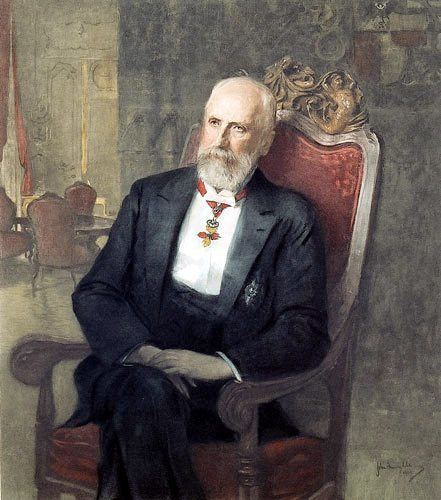Predecessor Aloys II | Mother Franziska Kinsky Name Johann Prince | |
 | ||
Reign 12 November 1858 – 11 February 1929 Born 5 October 1840Eisgrub, Moravia ( 1840-10-05 ) House Princely Family of Liechtenstein Parents Countess Franziska Kinsky of Wchinitz and Tettau, Aloys II, Prince of Liechtenstein Siblings Franz I, Prince of Liechtenstein Grandparents Johann I Joseph, Prince of Liechtenstein, Landgravine Josepha of Furstenberg-Weitra Similar People Franz I - Prince of Liechtenstein, Karl I - Prince of Liechtenstein, Prince Joseph Wenzel of, Elisabeth von Gutmann, Princess Henriette of Liechtenstein | ||
Johann II (German: Johann Maria Franz Placidus; 5 October 1840 – 11 February 1929), a.k.a. Johann II der Gute or Johann II the Good, was the Prince of Liechtenstein between 1858 and 1929. His reign of 70 years and 90 days is the second-longest in European royal history after that of Louis XIV of France who, however, was crowned at age 5.
Contents
Early life
Johann II was the elder son of Aloys II, Prince of Liechtenstein and Countess Franziska Kinsky of Wchinitz and Tettau. He ascended to the throne shortly after his 18th birthday, and as such his reign is the longest precisely documented tenure of any European monarch since antiquity in which a regent was never employed. The global leader, Rama IX of Thailand exceeded this reign by a scant 35 days.
Law and reform
In 1862, Johann II issued Liechtenstein's first constitution. Later, after Liechtenstein left the German confederation in 1866 and after World War I, Johann II granted a new constitution in 1921. It granted considerable political rights to common Liechtensteiners, the latter making the principality a constitutional monarchy. This constitution survives today but with revisions, most notably in 2003.
Liechtenstein left the German Confederation in 1866. Not long after, the army of Liechtenstein was abolished as it was regarded as an unnecessary expense.
Foreign affairs
Johann II somewhat cooled relations with Liechtenstein's traditional ally, Austria-Hungary and its successor states, to forge closer relations with Switzerland, particularly after World War I. Liechtenstein was neutral during World War I, but the war broke Liechtenstein's alliance with Austria-Hungary and led it to go into a customs union with Switzerland. Late in Johann's reign, in 1924, the Swiss franc became Liechtenstein's official currency.
Patron of the arts
Johann II added much to the Liechtenstein Princely Collections. Although considered a prominent patron of the arts and sciences during his long reign, Johann II was also considered to be rather unsociable and did not participate in social events. He never married or had any children, like several other members of his family.
Between 1905–1920, Schloss Vaduz was renovated and expanded. Prince Johann II did not live in the castle or even Liechtenstein, though his successors would eventually move there in 1938. Schloss Vaduz would be their home.
He was the 987th Knight of the Order of the Golden Fleece in Austria.
Upon his death in 1929, Johann II was succeeded by his brother Franz I.
